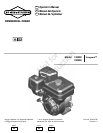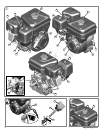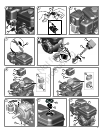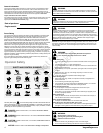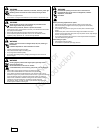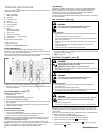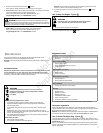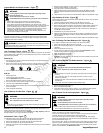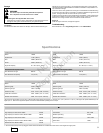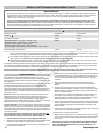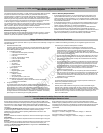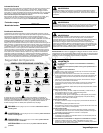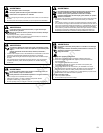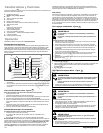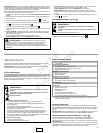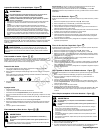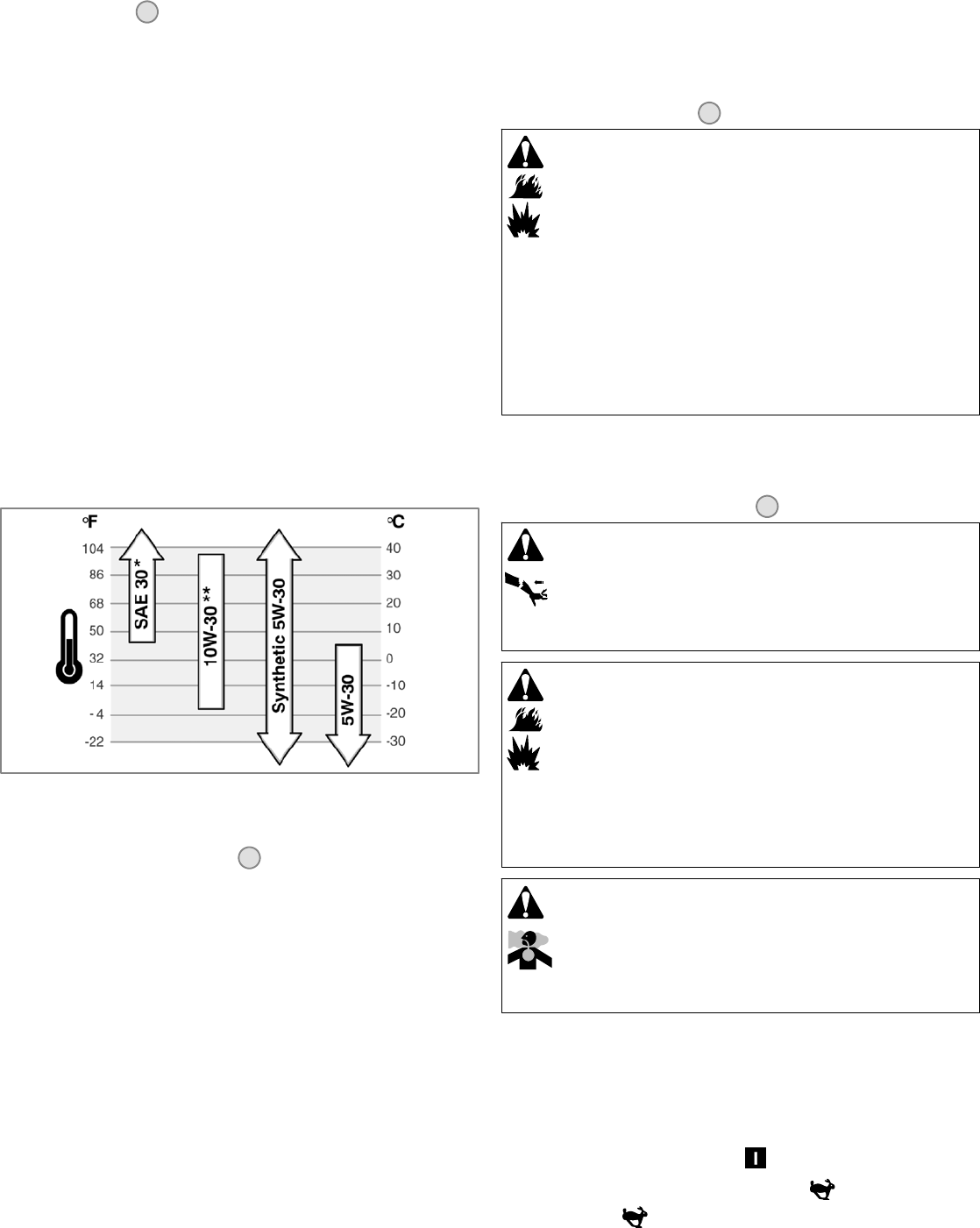
6 VanguardEngines.com
Features and Controls
Compare the illustration
1
with your engine to familiarizeyourself with the location of
various features and controls.
A. Engine Identification
Model Type Code
B. Spark Plug
C. Fuel Tank and Cap
D. Air Cleaner
E. Starter Cord Handle
F. Oil Fill and Dipstick
G. OilDrain Plug
H. Muffler
Muffler Guard (optional)
Spark Arrester (optional)
I. Choke Control
J. Throttle Control (optional)
K. TransportGuardt -- Fuel/Ignition Lever
L. Finger Guard
M. Gear Reduction Unit (optional)
Operation
Oil capacity (see the Specifications section)
Oil Recommendations
We recommend the use of Briggs & Stratton Warranty Certified oils for best
performance. Other high-quality detergent oils areacceptable if classified for service SF,
SG, SH, SJ or higher. Do not use special additives.
Outdoor temperatures determine the proper oil viscosity for the engine. Use the chart to
select the best viscosity for the outdoor temperature range expected.
* Below 40°F(4°C) the use of SAE 30 will result in hard starting.
** Above 80°F(27°C) the use of 10W-30 may cause increased oil consumption. Check
oil level more frequently.
How To Check/Add Oil - Figure
2
Before adding or checking the oil
Place engine level.
Clean the oil fill area of any debris.
1. Remove the dipstick (A) and wipe with a clean cloth.
2. Insert the dipstick. Do not turn or tighten.
3. Remove thedipstick andcheck the oillevel. Itshould be at thetop of the fullindicator
(B) on the dipstick.
4. To add oil, pour the oil slowly into the engine oil fill (C). Fill to point of overflowing.
5. Replace and tighten the dipstick.
Fuel Recommendations
Fuel must meet these requirements:
Clean, fresh,unleaded gasoline.
A minimum of 87 octane/87 AKI (91 RON). High altitude use, see below.
Gasoline with upto 10% ethanol(gasohol) is acceptable.
CAUTION: Do not use unapproved gasolines, such as E15 and E85. Do not mix oil in
gasoline or modify the engine to run on alternate fuels. This will damage the engine
components and void the engine warranty.
To protect the fuel system fromgum formation, mix a fuel stabilizer into the fuel. See
Storage. All fuel is not the same. If starting or performance problems occur, change fuel
providers or change brands. This engine is certified to operate on gasoline. The
emissions control system for this engine is EM (Engine Modifications).
High Altitude
At altitudes over 5,000 feet (1524 meters), a minimum 85 octane/85 AKI (89 RON)
gasoline is acceptable. To remain emissions compliant, high altitude adjustment is
required. Operation without this adjustment will cause decreased performance,
increased fuel consumption, and increased emissions. See a Briggs & Stratton
Authorized Dealer for high altitude adjustment information.
Operation of the engine at altitudes below 2,500 feet (762 meters) with the high altitude
kit is not recommended.
How To Add Fuel - Figure
3
WARNING
Fuel and its vapors are extremely flammable and explosive.
Fire or explosion can cause severe burns or death.
When Adding Fuel
Turn engineoff and let enginecool atleast2 minutesbeforeremoving thefuel
cap.
Fill fueltank outdoors orin well-ventilated area.
Do not overfill fuel tank. Toallow for expansion of the fuel, do not fill above the
bottom of the fuel tank neck.
Keepfuel awayfromsparks, openflames,pilotlights, heat,andother ignition
sources.
Check fuellines, tank, cap, andfittings frequently forcracks or leaks.
Replace ifnecessary
If fuel spills, wait until it evaporates before starting engine.
1. Clean the fuel cap area of dirt and debris. Remove the fuel cap (A, Figure 3).
2. Fill the fuel tank (B) with fuel. To allow for expansion of the fuel, do not fill above the
bottom of the fuel tank neck (C).
3. Reinstall the fuel cap.
How To Start The Engine - Figure
4
Rapid retraction of starter cord (kickback) will pull hand and arm
toward engine faster than you can let go.
Broken bones, fractures, bruises or sprains could result.
WARNING
When starting engine, pull the starter cord slowly until resistance is felt and then
pull rapidly to avoid kickback.
WARNING
Fuel and its vapors are extremely flammable and explosive.
Fire or explosion can cause severe burns or death.
When Starting Engine
Ensure that spark plug, muffler, fuel cap and air cleaner (if equipped) are in
place and secured.
Do not crank engine with spark plug removed.
If engine floods, set choke (if equipped) to OPEN/RUN position, move throttle
(if equipped) to FAST position and crank until engine starts.
Engines give off carbon monoxide, an odorless, colorless, poison gas.
Breathing carbon monoxide can cause nausea, fainting or death.
WARNING
Start and run engine outdoors.
Do not start or run engine in enclosed area, even if doors or windows are open.
NOTICE: This engine was shipped from Briggs & Stratton without oil. Before you start
the engine, make sure you add oil according to the instructions in this manual. If you
start the engine without oil, it will be damaged beyond repair and will not be covered
under warranty.
Note: Some engines and equipment have remote controls. See the equipment manual
for location and operation of remote controls.
1. Check the oil level. See the How To Check/Add Oil section.
2. Make sure equipment drive controls, if equipped, are disengaged.
3. Move the fuel/ignition lever (A) to the on
position (Figure 4).
4. Move the throttle control (B), if equipped, to the fast
position. Operate the
engine in the fast
position.
Not for
Reproduction



